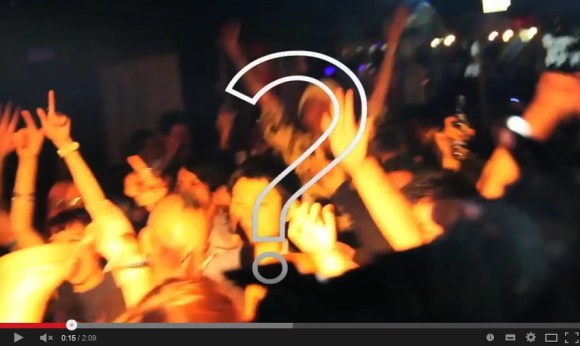
On 15 October it was reported that Masatoshi Kanemitsu would have to go back to court after being acquitted by the Osaka District Court. His alleged crime: allowing his customers to dance in the Umeda area club he owned called Noon.
This kind of law prohibiting dancing might sound straight out of some fundamentalist theocracy, but it’s alive and well in Japan. Actually, it’s far worse than a draconian “no dancing whatsoever” law that you know where things stand; nightclubs in Japan seem to allow dancing until someone in authority decides otherwise. There’s no way to know until officers start bursting through your doors.
This sword dangling over the heads of the remaining clubs is called the Act on Control and Improvement of Amusement and Entertainment Business or Fueiho for short. So let’s take a quick look at why this law is crushing dancing in Japan, and I’ll do my best to avoid any Footloose references.
■ Private Dancers
The Fueiho law started 66 years ago as a way of busting up prostitution deals going down in dance halls during the US occupation of Japan. However, it’s safe to say those days are behind us, so why is this law still around?
A lot of times, laws that outlive whatever social problems they were intended to solve just stay in the books collecting dust, like the one about mocking someone who refuses your challenge to a duel. Fueiho wasn’t in that category though, as it has undergone some modifications over the years. In fact, it’s a wide-ranging piece of legislation that covers a variety of businesses from family restaurants to call girls.
Each of these enterprises is classified by a category, some of which allow dancing on the premises and some do not. So in a sense dancing is permitted under Fueiho, as long as you held the proper licenses for it and operated under the conditions of those licenses. What those conditions are, however, can be about as clear-cut as a plate of spaghetti.
■ Blind Eye
And so it went, for years and year parties were held and much dancing was done all across Japan. Many of the venues where people danced were not actually living up to their licenses under Fueiho. But eh… Why stand in the way of business as long as people aren’t going wild and getting killed? For such reasoning people freely got their groove on for years.
Then people started going wild and getting killed.
The first incident occurred in the 80s when two school girls were attacked and murdered after being led out of a Kubukicho disco by their assailant. This, in addition to a slew of other reported public nuisances, led to an outcry that resulted in a modification to Fueiho placing stricter conditions on establishments that offer dancing.
As a result of that, many clubs sought to change their licenses to something more lenient but didn’t technically allow dancing. That was okay though. As long as people weren’t getting dragged out onto the street and killed, why would the police get in the way of some dancing. And so, the nightclub business carried on.
Then someone got dragged out onto the street and killed.
In 2010, a university student succumbed to injures from a brawl outside a nightclub in the America-mura district of Osaka. This wasn’t an isolated incident, though, with other deaths and drug-related incident being connected to clubs the years leading up. However, this death appeared to be the beginning of a severe crackdown by police in Osaka not only on clubs in America-mura but eventually in the entire city.
■ Aftermath
When the dust from all the raids settled in the early 2010’s Osaka’s America-mura, which was ground zero for the clampdown, had its club scene wiped off the map. Other cities were hit hard too and some remnants of Tokyo’s scene were stuck in a bizarre limbo with owners cautiously trying to operate under the radar while under threat of impending raids at any moment.
Kanemitsu had his club raided in 2012 despite being run for nearly two decades without any major incidents. He was held in jail for almost a month before being charged for a crime that he would be later found innocent of. The judge ruled that the type of dancing that went on at Noon had insufficient bodily contact between customers to violate the restriction on “dancing which is conducive to promiscuous sex” as outlined in Fueiho, meaning he was not in violation of his license.
▼ A trailer for a documentary about Kanemitsu and Fueiho Save The Club Noon
However, now the prosecution is hoping to admit some police witnesses in the appeal, which we assume will testify to have seen some possible grinding among dancers and which could spell doom for the defendant.
On the bright side, in reaction to the rampant Fueiho enforcement of recent years, a group called Let’s Dance has been working towards loosening these restrictions on freedom of expression through petitions and other campaigns.
In what could be considered a very minor victory, the National Police Agency held a meeting of experts to try and find ways to mitigate the effects of Fueiho on dancing. In the end they came up with some suggestions on loosening restrictions on clubs such as allowing them to stay open after midnight as long as the lighting was on at a fixed brightness. Currently these are only suggestions though.
■ Why?
This still leaves the question of why this aspect of Fueiho still stands from the days of dance hall prostitution. There are no clear answers but a whole lot of theories. One theory put forth in Time Out Tokyo back in 2012 suggested that the whole clampdown was simply an exercise in bureaucracy. As a part of a periodic law review started in the early 2000s, the government accesses certain laws on their usefulness by how much they are actually enforced.
In the case of Fueiho and dancing, nearly a half a century of no enforcement would surely put certain aspects of it on the chopping block. That’s why authorities allegedly wanted to show that it was being put to good use, and with decades of catching up to do they came in fast and hard.
Keeping in mind that this is all just speculation, the reason that certain higher-ups might want to preserve this law largely as it is, is that it’s a powerful tool for the police in Japan. Because of the ambiguity of the Fueiho categories, police could storm any establishment for a seemingly endless number of reasons from the music being too loud or the dancing a little to touchy-feely on a floor-space smaller than 66 square meters.
▼ Sign outside of a bar in Roppongi
Once the violation is stated, the authorities have free reign to search the premises and delve into the personal dealings and bank accounts of its staff and owners, just as they did to Mr. Kanemitsu in that fateful spring of 2012. Although, it’s not a power that would be needed often for legitimate cases of organized crime or drugs, it’s not far-fetched to imagine this is an advantage that law-enforcement would not like to have slip away.
■ From here
If theories like the one above are correct, then we’ll likely see the heat gradually die down again and dance clubs hesitantly open up here and there. Then, at some point in the future police will start another series of raids in an endless cycle of destruction and rebuilding as Fueiho stays in place undergoing occasional superficial changes.
In the end, it all may not have anything to do with dancing, nor should it. After all, from the oldest of times, people danced for a number of reasons. They danced in prayer or so that their crops would be plentiful, or so their hunt would be good. And they danced to stay physically fit and show their community spirit. And they danced to celebrate. Ecclesiastes assures us that there is a time for every purpose under heaven. A time to laugh, a time to weep, and a time to dance. And there was a time for this law but not anymore. See, this is our time to dance.
…Damn, I almost made it.
Source: Asahi Shimbun 1, 2, Fueiho, Save the Club Noon, Let’s Dance (Japanese), Time Out Tokyo, Japan Today, Footloose (English)
New paper image: Mikaitetsujiken 2ch Matome @Wiki
No dancing sign image: Wikipedia – Nicolas1981
Video: YouTube – aeo moriro


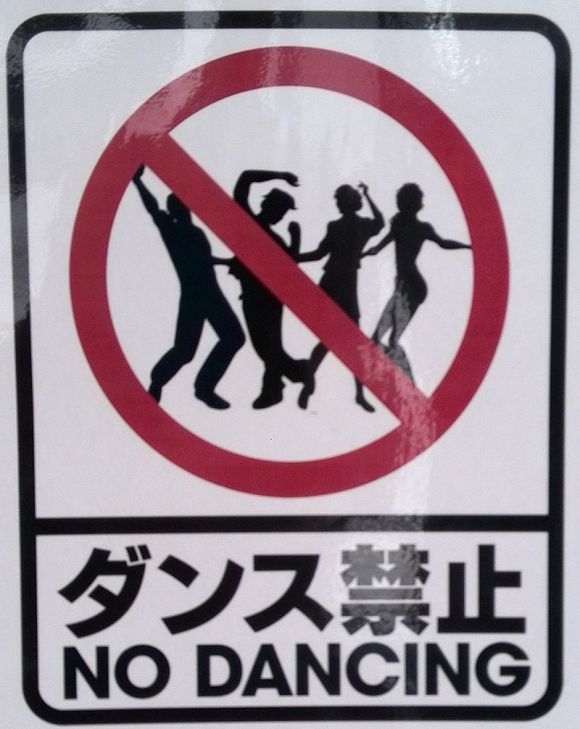
 Japan government to allow dancing past midnight by candlelight, joins the 19th century
Japan government to allow dancing past midnight by candlelight, joins the 19th century Same-sex prostitution business technically legal in Japan, goes untouched by police
Same-sex prostitution business technically legal in Japan, goes untouched by police Japanese government relaxes “no dancing” regulations, but is it actually an improvement?
Japanese government relaxes “no dancing” regulations, but is it actually an improvement? Confessions of a 46-year-old Japanese male pole dancer
Confessions of a 46-year-old Japanese male pole dancer Immigration raid at anime convention ends with five Japanese cosplayers being arrested overseas
Immigration raid at anime convention ends with five Japanese cosplayers being arrested overseas Foreigner’s request for help in Tokyo makes us sad for the state of society
Foreigner’s request for help in Tokyo makes us sad for the state of society Red light district sushi restaurant in Tokyo shows us just how wrong we were about it
Red light district sushi restaurant in Tokyo shows us just how wrong we were about it Japanese city loses residents’ personal data, which was on paper being transported on a windy day
Japanese city loses residents’ personal data, which was on paper being transported on a windy day Should you add tartar sauce to Japanese curry rice? CoCo Ichi makes diners an unusual offer
Should you add tartar sauce to Japanese curry rice? CoCo Ichi makes diners an unusual offer Historical figures get manga makeovers from artists of Spy x Family, My Hero Academia and more
Historical figures get manga makeovers from artists of Spy x Family, My Hero Academia and more Akihabara pop-up shop sells goods made by Japanese prison inmates
Akihabara pop-up shop sells goods made by Japanese prison inmates Ghibli Park now selling “Grilled Frogs” from food cart in Valley of Witches
Ghibli Park now selling “Grilled Frogs” from food cart in Valley of Witches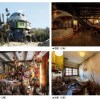 Ghibli Park opens final area to first visitors, with stunning new attractions and shops 【Videos】
Ghibli Park opens final area to first visitors, with stunning new attractions and shops 【Videos】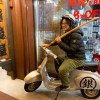 A Gintama fan’s emotional 19-year journey to buy a proper Lake Toya bokuto wooden katana【Pics】
A Gintama fan’s emotional 19-year journey to buy a proper Lake Toya bokuto wooden katana【Pics】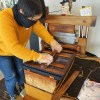 We make pills the old-fashioned way in Japan’s former medicine capital, Toyama Prefecture
We make pills the old-fashioned way in Japan’s former medicine capital, Toyama Prefecture McDonald’s new Happy Meals offer up cute and practical Sanrio lifestyle goods
McDonald’s new Happy Meals offer up cute and practical Sanrio lifestyle goods Japanese ramen restaurants under pressure from new yen banknotes
Japanese ramen restaurants under pressure from new yen banknotes French Fries Bread in Tokyo’s Shibuya becomes a hit on social media
French Fries Bread in Tokyo’s Shibuya becomes a hit on social media Studio Ghibli releases new action figures featuring Nausicaä of the Valley of the Wind characters
Studio Ghibli releases new action figures featuring Nausicaä of the Valley of the Wind characters New private rooms on Tokaido Shinkansen change the way we travel from Tokyo to Kyoto
New private rooms on Tokaido Shinkansen change the way we travel from Tokyo to Kyoto Tokyo Tsukiji fish market site to be redeveloped with 50,000-seat stadium, hotel, shopping center
Tokyo Tsukiji fish market site to be redeveloped with 50,000-seat stadium, hotel, shopping center Beautiful Ghibli sealing wax kits let you create accessories and elegant letter decorations【Pics】
Beautiful Ghibli sealing wax kits let you create accessories and elegant letter decorations【Pics】 Studio Ghibli releases Kiki’s Delivery Service chocolate cake pouches in Japan
Studio Ghibli releases Kiki’s Delivery Service chocolate cake pouches in Japan New definition of “Japanese whiskey” goes into effect to prevent fakes from fooling overseas buyers
New definition of “Japanese whiskey” goes into effect to prevent fakes from fooling overseas buyers Our Japanese reporter visits Costco in the U.S., finds super American and very Japanese things
Our Japanese reporter visits Costco in the U.S., finds super American and very Japanese things All-you-can-drink Starbucks and amazing views part of Tokyo’s new 170 meter-high sky lounge
All-you-can-drink Starbucks and amazing views part of Tokyo’s new 170 meter-high sky lounge More foreign tourists than ever before in history visited Japan last month
More foreign tourists than ever before in history visited Japan last month New Pokémon cakes let you eat your way through Pikachu and all the Eevee evolutions
New Pokémon cakes let you eat your way through Pikachu and all the Eevee evolutions Disney princesses get official manga makeovers for Manga Princess Cafe opening in Tokyo
Disney princesses get official manga makeovers for Manga Princess Cafe opening in Tokyo Sales of Japan’s most convenient train ticket/shopping payment cards suspended indefinitely
Sales of Japan’s most convenient train ticket/shopping payment cards suspended indefinitely Sold-out Studio Ghibli desktop humidifiers are back so Totoro can help you through the dry season
Sold-out Studio Ghibli desktop humidifiers are back so Totoro can help you through the dry season Japanese government to make first change to romanization spelling rules since the 1950s
Japanese government to make first change to romanization spelling rules since the 1950s Ghibli founders Toshio Suzuki and Hayao Miyazaki contribute to Japanese whisky Totoro label design
Ghibli founders Toshio Suzuki and Hayao Miyazaki contribute to Japanese whisky Totoro label design Doraemon found buried at sea as scene from 1993 anime becomes real life【Photos】
Doraemon found buried at sea as scene from 1993 anime becomes real life【Photos】 Tokyo’s most famous Starbucks is closed
Tokyo’s most famous Starbucks is closed One Piece characters’ nationalities revealed, but fans have mixed opinions
One Piece characters’ nationalities revealed, but fans have mixed opinions We asked a Uniqlo employee what four things we should buy and their suggestions didn’t disappoint
We asked a Uniqlo employee what four things we should buy and their suggestions didn’t disappoint Princesses, fruits, and blacksmiths: Study reveals the 30 most unusual family names in Japan
Princesses, fruits, and blacksmiths: Study reveals the 30 most unusual family names in Japan Popular TV show’s awe-inspiring Mario dance number is geektastically cool
Popular TV show’s awe-inspiring Mario dance number is geektastically cool “Conbini warp” an increasing traffic problem for businesses and authorities across Japan
“Conbini warp” an increasing traffic problem for businesses and authorities across Japan YouTube goes crazy for “Bubbly” high school girls’ amazing retro ’80s dance routine 【Video】
YouTube goes crazy for “Bubbly” high school girls’ amazing retro ’80s dance routine 【Video】 Singing and dancing lessons, too!? An inside-look at a Tokyo voice acting academy
Singing and dancing lessons, too!? An inside-look at a Tokyo voice acting academy Toyama man first person in Japan to be arrested for selling jailbroken iPhones
Toyama man first person in Japan to be arrested for selling jailbroken iPhones We eat a meal to remember…at a Japanese police station in Fukuoka
We eat a meal to remember…at a Japanese police station in Fukuoka Japanese inventor creates musical strobe light bra that flashes to beat, adds fills when squeezed
Japanese inventor creates musical strobe light bra that flashes to beat, adds fills when squeezed “I Like Orange Juice!” Piko Taro releases new single that’s just as ridiculous as PPAP 【Video】
“I Like Orange Juice!” Piko Taro releases new single that’s just as ridiculous as PPAP 【Video】 The Great Obon Disaster: A fable of cicadas, dancing, and cats
The Great Obon Disaster: A fable of cicadas, dancing, and cats Tokyo proposes new law cracking down on requests for teens to share nude selfies online
Tokyo proposes new law cracking down on requests for teens to share nude selfies online Boot camps and desertion in the mountains among the ways Japanese companies train new recruits
Boot camps and desertion in the mountains among the ways Japanese companies train new recruits Super Crazy Kun wins seat in Toda City Council election
Super Crazy Kun wins seat in Toda City Council election Hugging, “borrowing” Wi-Fi and 8 other things that can get you arrested in Singapore
Hugging, “borrowing” Wi-Fi and 8 other things that can get you arrested in Singapore Four things women are banned from doing in Japan【Women in Japan Series】
Four things women are banned from doing in Japan【Women in Japan Series】 Mayor of Osaka wants to legally control when kids can and can’t use smartphones in their own home
Mayor of Osaka wants to legally control when kids can and can’t use smartphones in their own home
Leave a Reply